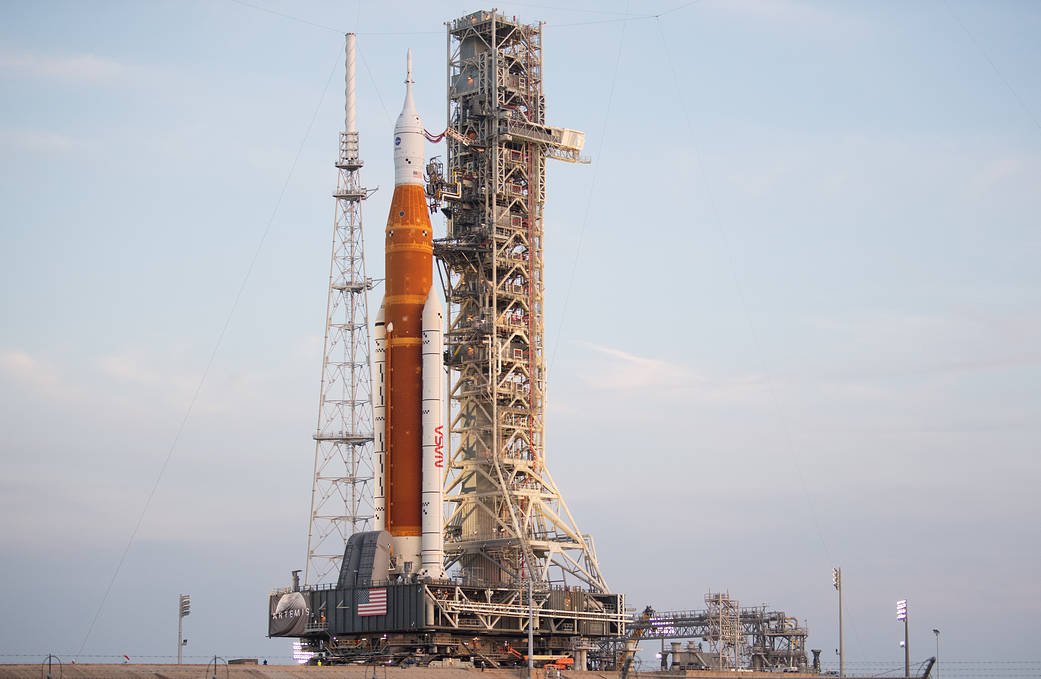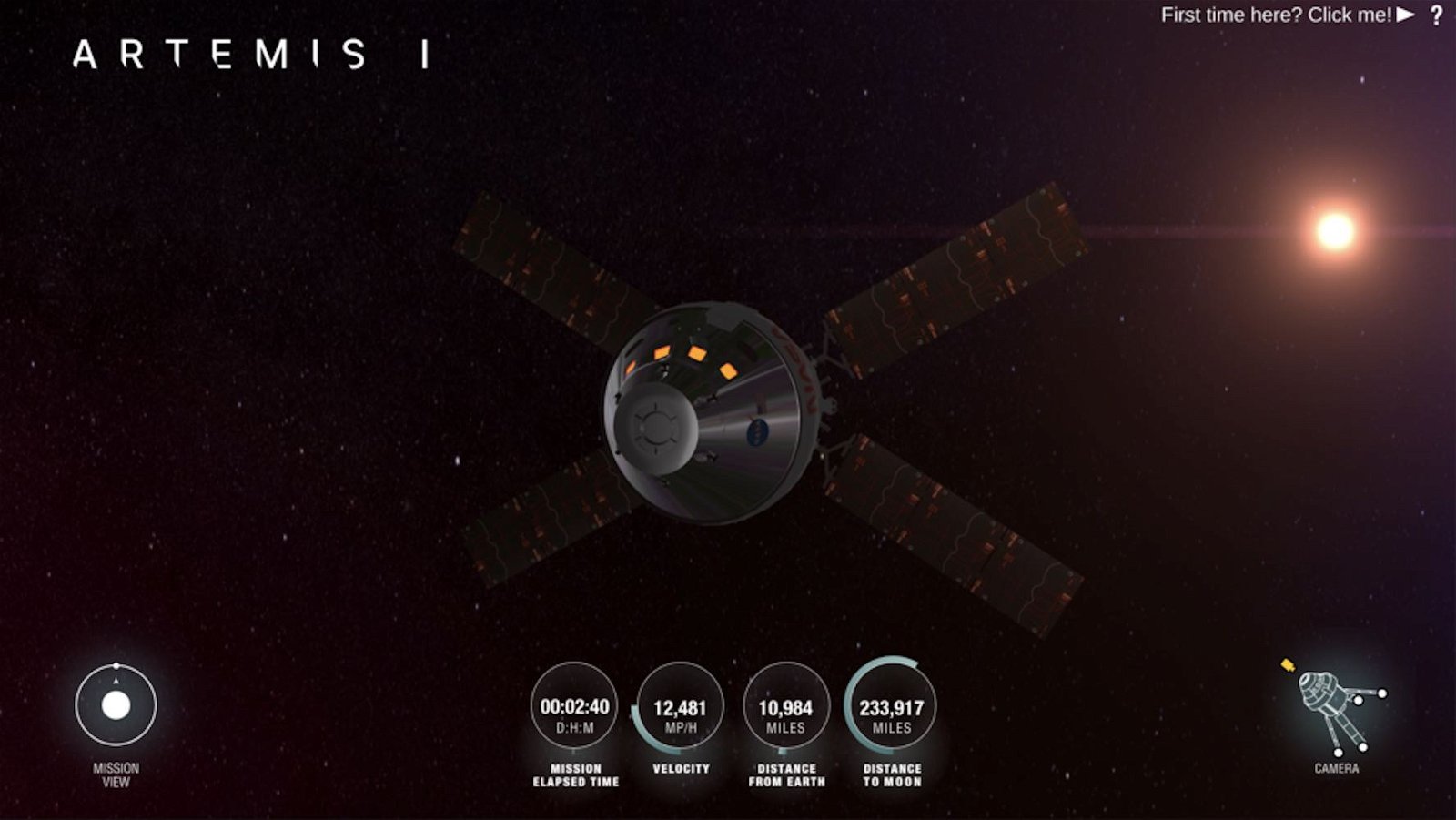

Welcome to this week’s installment of The Intelligence Brief… as NASA gears up for the first test launch in advance of its historic Artemis mission, we’ll be looking at 1) the all-night effort to transport NASA’s SLS rocket to its launch pad, 2) what NASA plans to accomplish during the test flight of its new “retro” rocket, and 3) how data collected during the mission will be made available for those wishing to follow the mission as it proceeds.
Quote of the Week
“We choose to go to the Moon in this decade and do the other things, not because they are easy, but because they are hard.”
– John F. Kennedy
Before we get into things, as always, there have been a lot of stories we’ve been covering in recent days at The Debrief, which includes how for the first time, scientists have confirmed a major breakthrough in nuclear fusion involving the first successful instance of ignition. Elsewhere, a team of Chinese scientists claims they’ve developed a new “anti-stealth” radar system that can be covertly set up virtually anywhere. Also, our friends over at Colossal Biosciences has announced their new effort to resurrect the Thylacine using innovative de-extinction technologies.
But for now, it’s time we shift our attention back over to what was going on over the last couple of days at Kennedy Space Center as NASA prepares for its historic Artemis moon mission in the days ahead.
NASA Pulls an All-Nighter Preparing for Artemis I
Late Tuesday night, a rocket NASA plans to send to the Moon was rolled out to its Kennedy Space Center launch pad in advance of what is expected to be a historic flight in the days ahead.
The first launch in NASA’s ambitious Artemis program, the forthcoming test launch is currently scheduled for late August and will aim to provide key data in advance of the space agency’s lunar mission that plans to send a human crew back to the Moon by as soon as 2025.
The massive, 322-foot rocket drew crowds of employees early Wednesday morning, “many of whom were not yet born when NASA sent astronauts to the moon a half-century ago,” the AP reported. According to sources, just transporting the rocket to its launch pad required close to ten hours, making it an all-night undertaking that finally brought the rocket to its current location shortly before sunrise.
By August 29, NASA plans to launch the rocket for its initial lunar test flight in an unmanned launch that will carry three mannequins and an array of sensitive equipment designed to gauge the functionality and safety of the spacecraft’s Orion capsule, which will be spend two weeks traveling around the moon, thereafter returning for an ocean splashdown landing in the Pacific.
The capsule will fly around the moon in a distant orbit for a couple of weeks, before heading back for a splashdown in the Pacific. The entire flight should last six weeks, and now, after decades of planning and billions in expenditures, NASA finally appears to be on track to send humans back to the lunar surface.
Into Deep Space on a ‘Retro’ Rocket
During its first integrated flight test, Orion will travel a total of 40,000 miles beyond the Moon. NASA rocket program manager John Honeycutt said in a statement that the August launch will be the first time since the early 1970s that NASA will “be launching a rocket that’s designed for deep space.”


Shorter than the Apollo-era Saturn V rockets of decades past by more than 40 feet, the new SLS moon rocket NASA will be employing packs a greater punch, thanks both to its core stage as well as the twin strap-on boosters that will propel it into space, similar to the systems used to carry NASA’s space shuttles aloft in the past.
NASA Administrator Bill Nelson, an enthusiastic champion of NASA’s efforts since long before taking his current position heading the space agency, said the SLS moon rocket “almost looks retro… like we’re looking back toward the Saturn V.”
Don’t let its classic appearance fool you, though. The SLS will be capable of delivering 21st-century performance as the Artemis missions unfold, which the agency hopes its late-August test launch will help to showcase.
Following Artemis to the Moon
NASA has announced several new interactive ways that people can follow Artemis I as it sends the Orion capsule beyond the Moon, with help from the Artemis Real-time Orbit Website (AROW).
“AROW will be available beginning Aug. 28 on NASA’s website and on the @NASA_Orion Twitter account,” the space agency said in a recent statement.
Users in the days ahead can look forward to accessing an array of data that the sensors aboard the Orion capsule will be collecting during its initial test flight, which is subsequently delivered to Mission Control back at NASA’s Johnson Space Center in Houston.
The data made available through AROW will “provide periodic real-time data beginning about one minute after liftoff through separation of the SLS rocket’s Interim Cryogenic Propulsion Stage approximately two hours into flight. Once Orion is flying on its own, AROW will provide constant real-time information.”
Seth Lambert, Orion programmer and creator of the interactive AROW system, recently called it “a really powerful way to engage with the mission and understand the scope of what NASA is trying to accomplish with Artemis I.”


Richard Garodnick, an engineer on the mission control center system engineering and development team at Johnson Space Center, added that “Knowing what the spacecraft is doing during the mission is already cool, but now that Orion’s data can be visualized in all these different ways, it will be interesting to see what creative projects others come up with.”
Obviously, NASA will be busy in the days ahead as it completes final preparations for the Artemis I launch. However, with the accessibility to data that AROW will provide, it will be easy for space enthusiasts around the world to track the mission almost in real-time from the comfort of their own homes, and watch as the Artemis program takes the first few small steps toward NASA’s next historic giant leap in the future of human space travel.
That concludes this week’s installment of The Intelligence Brief. You can read past editions of The Intelligence Brief at our website, or if you found this installment online, don’t forget to subscribe and get future email editions from us here. Also, if you have a tip or other information you’d like to send along directly to me, you can email me at micah [@] thedebrief [dot] org, or Tweet at me @MicahHanks.


Here are the top stories we’re covering right now…
- Chinese Scientists Say They Have Developed a New Covert “Anti-Stealth” Radar
A team of Chinese scientists claim they’ve developed a new “anti-stealth” radar system that can be covertly set up virtually anywhere.
- Hidden Beyond the Edge of a Black Hole, a Curious Ring of Light Has Been Detected in a Supergiant Galaxy
Astrophysicists have revealed a once-hidden ring of light in “remastered” versions of the historic first images of a black hole.
- Resurrecting the Thylacine: Colossal Announces Plans to “De-Extinct” the Tasmanian Tiger
Colossal Biosciences has announced its new effort to ressurrect the Thylacine using innovative de-extinction technologies.
- Canadian Researcher Chris Rutkowski Talks UFOs on ‘Rebelliously Curious’ From Pilot Encounters to Crash Retrievals, Chris Tells All
Canadian UFO researcher Chris Rutkowski says his UFO journey began when he intercepted a call to his univerity’s astronomy department.
- The Enigmatic Cosmos: Universal Laws and Life on Other Worlds
Astronomer Avi Loeb looks at the nature of scientific knowledge, as he discusses dark matter, the universe, and life on other worlds.
- We Have Ignition: Remarkable Breakthrough in Nuclear Fusion Represents a New Physics Milestone
For the first time, scientists have confirmed a major breakthrough in nuclear fusion involving the first successful instance of ignition.
- Meteorite Debris Patterns Could Help Reveal Their Origins, According to New Research
A recent study has found patterns in how meteorites fall to Earth, offering new details on what parts of these space objects survive reentry.
- DNA Study Confirms Evidence of the Oldest Domesticated Horse in America
The recent fossil discovery of a domesticated horse tooth is expanding our knowledge of the history of the early Americas.
- Extraterrestrial Intelligence: What is Our Rating on the Cosmic Dating Scene?
Avi Loeb shares his insights on the first Galileo Project conference and the scientific search for the relics left behind by extraterrestrial intelligence.
- Consciousness Mystery Could Be Solved By This Compelling New Physics Theory
A new physics theory proposes novel solutions to a longstanding mystery, which philosophers call the hard problem of consciousness.
- Research Suggests Smartphones Could Help Improve Your Memory, But There’s a Catch
A new study from University College London looked at how a smartphone could improve memory as a way to store extra information.
- Rare and Unexplained, Scientists May Soon Solve the Mystery of Lightning “Superbolts”
For decades, scientists have been aware of the existence of a rare and mysterious form of lightning known as superbolts.
- China’s New Top Secret Spaceplane Looks Awkwardly Familiar
China recently launched its new top-secret spaceplane, which is believed to look awkwardly similar to the U.S.’s X-37B spaceplane.
- How Liquid Water is Stored on Exoplanets Could Shed More Light on Extraterrestrial Life
New research reveals more about the atmospheric conditions needed to find liquid water, which may help in the search for extraterrestrial life.
- As the Length of Days on Earth Changes, Scientists Search for Answers
This week we examine what atomic clocks are revealing about changes to the length of days on Earth, and why it has some scientists worried.